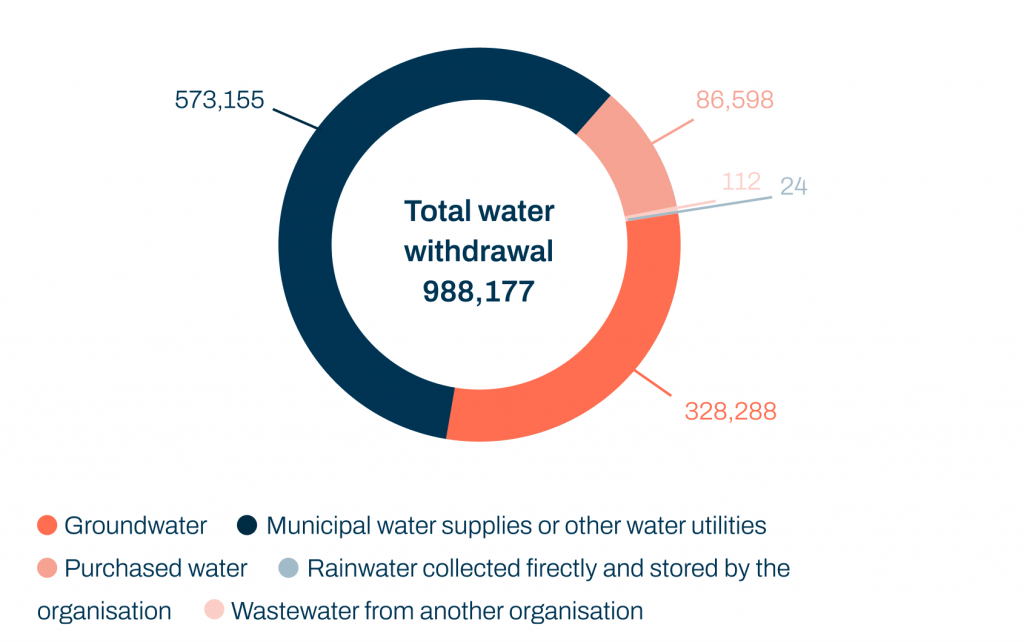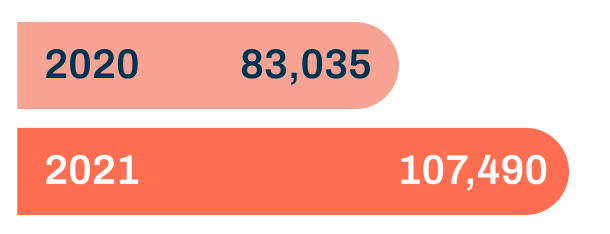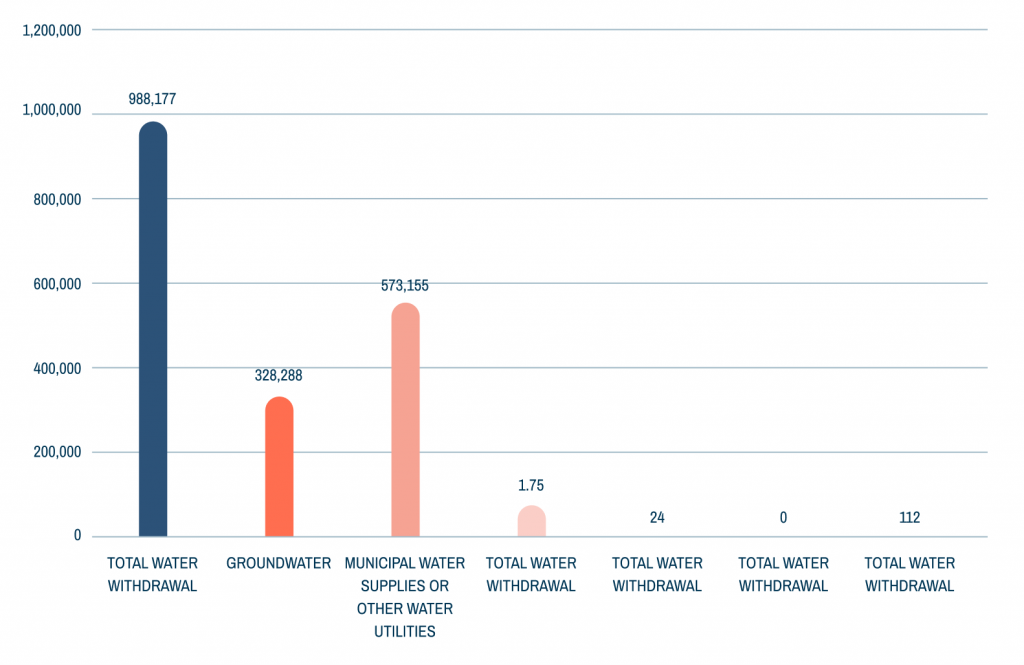Water use focuses on water scarcity and how effectively we’re using and conserving our water supply.
We’re aiming to reduce water use across our operations, especially in areas with high water scarcity risks, as well as protect water quality in communities that we operate and live in.
The majority of the water that we use is related to non-contact cooling. This means that a lot of it is discharged to local sanitation departments, where we have several initiatives in place to minimise the volume of water that we use in production.

by source in m3

in m3

in m3


We recognise that water is a critical natural resource, so we strive to use it in an efficient and responsible way.
In 2021, we used approximately 988,177 cubic meters of water, which represents our baseline year for water data collection and validation. We are implementing a strategy to reduce our water use and increase our conservation efforts – particularly in areas that have water scarcity issues.
After being used for industrial activities such as non-contact cooling, we typically discharge the vast majority of our water to the local sewer system and waste water treatment systems, after ensuring that local specifications are met.
The graphic below shows the total volume of water we use, as well as a breakdown by source.
total and source breakdown m3

How we’re managing our energy efficiency and greenhouse gas emissions of our products and services during their use phases.
Our products help reduce exhaust and evaporative emissions, as well as reduce the weight of material in the vehicle. Reducing weight directly affects the fuel efficiency for internal combustion engine-powered cars and allows electric vehicles to go further on a charge.
These products include lightweight pressure-resistant fuel tanks, lightweight plastic lines and connectors for coolant and refrigerants. We also manufacture high-pressure fuel rails that optimise internal combustion engines and increase fuel efficiency.
We strive to reduce our energy usage in our transport, logistics and general operations, helping us to adhere to the following SDGs.
We updated our CO2e emissions reduction goal in 2021, working alongside the ESG Steering Committee. Our target is a 37.5% reduction by 2039 for our Scope 1 and 2 emissions compared to 2019 levels on a like-for-like basis.
These reduction targets are consistent with the Paris Agreement ‘Well Below 2°C’ scenario and in support of SDG 13: Climate action. This means that we will compare our actual emissions in 2039 to the baseline year of 2019, without adjustment for expected growth and increased production levels between 2019 and 2039.
We’ve achieved net reduction in the consumption of electricity over the last three years. The vast majority of this reduction is related to the COVID-19 pandemic and the microchip shortage, while a smaller portion is related to our energy efficiency projects.
Intensity factor (CO2eT per €m revenue)

Global electricity consumption (kWh)

Our GHG emissions have decreased from our 2019 baseline year significantly. This is, to a large extent, due to volume reduction related to COVID-19 and the microchip shortage. We have also reduced emissions by switching to renewable energy – particularly in the UK and Spain.
Global Scope 1 emissions (CO2eT)

Global Scope 2 emissions (CO2eT)
